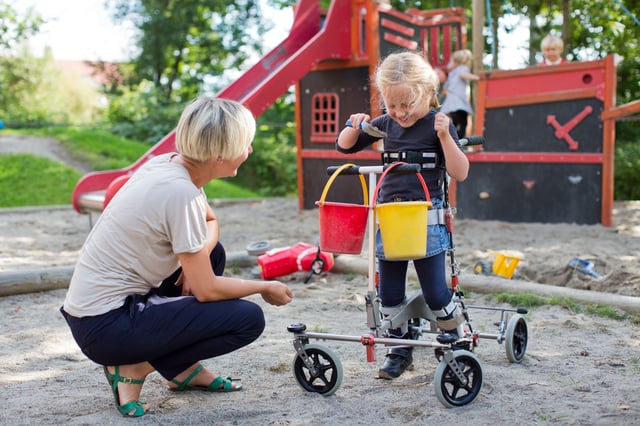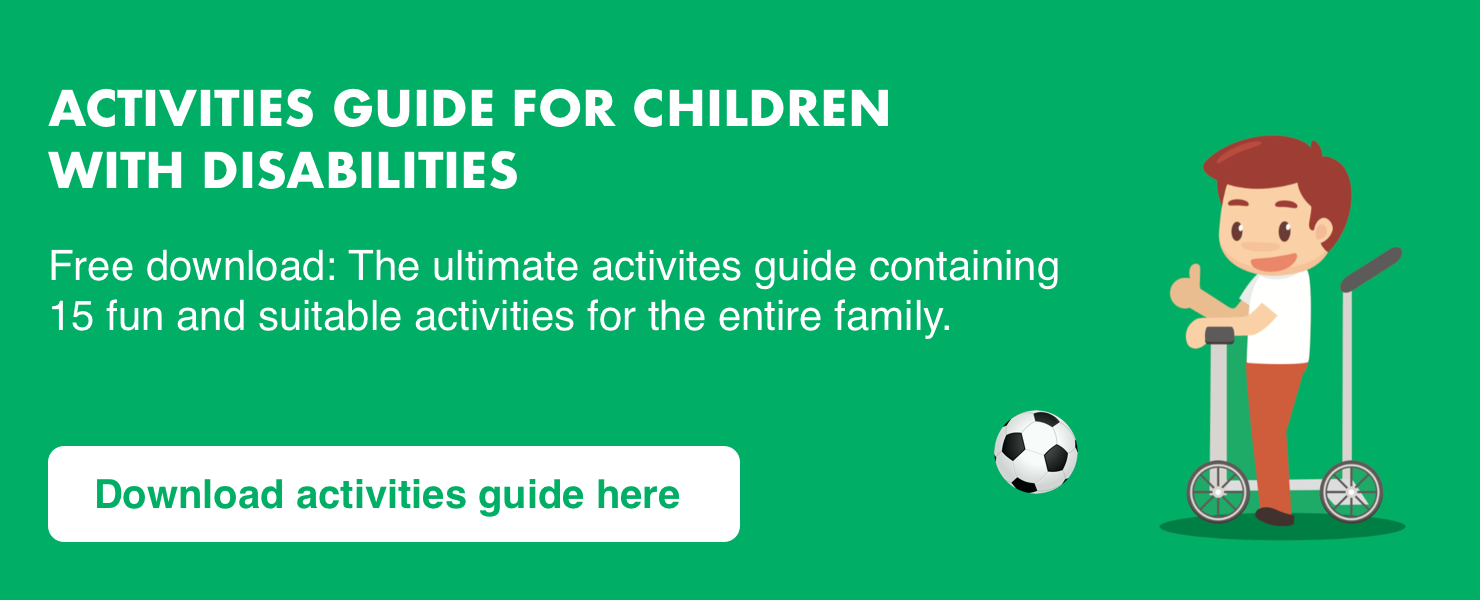
Jan 13, 2017Assistive Devices To Help Make Everyday Life Easier

Back to Blog Overview
For people with disabilities, assistive devices and technology offer opportunity for inclusion in all aspects of everyday life. Here is an overview of devices that breaks down the barrier of participation and activity limitations.
For children with disabilities, assistive devices aren’t just helpful for mobility, motor functions and positioning – they also offer an opportunity for them to communicate with peers and parents alike, and be included in all aspects of everyday life.

So which assistive devices do my child need? Every child is different and have individaly needs. One person may need a device for communication; another may need special writing tools designed for people with muscle strength problems.
Read also: When Should Assistive Devices Be Introduced?
Whatever your child’s particular needs, these devices and technologies will help benefit communication as well as motor function – and to show that assistive devices can increase life’s pleasures as well as its necessities, we’ve included aids for sports and leisure activities.
Assistive devices to Help Your Child Communicate
Children with disabilities, for example CP often struggle to communicate, due to symptoms of the condition such as muscle spasms in the mouth, tongue, and throat. This can make forming words and sentences a challenge, which in turn makes everyday life more difficult for children, parents, and peers alike.
So assistive communication devices not only give a child the opportunity to participate in conversations: they can also help with forming friendships as children will be able to ask questions, express emotions, and actively engage with the world.
- Communication Devices
There are numerous devices to help children with disabilities in communicating, such as electronic communication boards which allows children to choose letters, words and phrases on the screen in order to verbally express their thoughts.
Many of the high-tech communication boards also allows the child to communicate through eye-tracking technology which functions like a mouse on a computer. This way, the child can make eye contact with a symbol or letter for a short period of time to make a selection.
- Hearing and Vision Aids
Hearing aids and vision aids like telephone amplifiers and large text print books can be very helpful for your child’s communication abilities.
Assistive Technology for Motor Function and Positioning
Technology for motor function can be very useful in assisting a child with movement difficulties, and they also promote stability by holding him or her in an upright position. Today there are many assistive devices that will make everyday life easier.
- Standing and walking
Not all children with disabilities are able to stand upright on their own. Standing frames will in those situations be a helpful device to enable the child to participate in activities.
Walking aids are adaptive equipment devices used to increase independent mobility. They assist the child when it comes to improving the balance and stability, and many models also provide gait training and postural correction. They will improve the child’s confidence in walking. Be sure that the walking aid meets the child’s needs and that it is adapted to the child.

- Wheelchairs
Assistive technology in form of wheelchairs, both powered and manual can be helpful. People with cerebral palsy may require assistance with their mobility and therefore need to use devices for powered mobility, for example a powered wheelchairs. Others may need to use a manual wheelchair to support them in their mobility.
Assistive Devices for Sports and Leisure Activities
- Adaptive Tricycle
This is a device for therapeutic cycling and will strengthen anti-gravity muscles and improve eye-hand coordination as well as improve respiration, swallowing, and the development of head and trunk control. Moreover, it’s a fun activity that can improve a child’s self-esteem and sense of belonging.
- Adaptive Art Supplies
Art is a great way for a child to express him or herself, gain skills and build self-esteem. A child with disabilities may find it easier to use larger markers or paint brushes, as these are easier to grip.
- Frame Football
Frame Football allows children who need the support of a frame or crutches to play football on a level playing field where the frame is part of the equipment.
You can read more about assistive devices and technology here.

Rikke Damkjær Moen brings many years of experience as clinical physiotherapist to the Made for Movement team. Her mission is to ensure that everybody, regardless of mobility problems, should be able to experience the joy and health benefits of physical activity. As our Medical Manager, Rikke is passionate about sharing knowledge so that individuals with special needs, families, and clinicians can discover the possibilities and solutions provided by Made for Movement.


